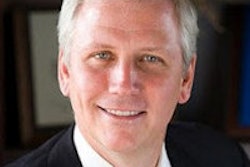
In part 1 of this series on advanced hiring and interviewing techniques, I explored common mistakes, preinterview planning, and marketing for the new applicant. Part 2 focused on the next critical steps in choosing the best applicant for your team. Now in part 3 we review reference and background checks, as well as incorporating the new team member into your practice.
For reference checks, the doctor or the senior team member who interviewed the applicant should make the calls. By law, employers are only responsible for reporting dates of employment, salary upon starting and leaving, whether the person is available for rehire, position, attendance history, and productivity.
When speaking to the reference, explain that you have already met with and interviewed the individual and want to verify what you were told. Your questions should be related to the job-specific duties you will need the applicant to perform, and you want the reference's opinion on the assessment of the applicant about his or her skill level. It is legal to do this and the best way to avoid "I only confirm dates of hire" types of responses. Use objectivity when interpreting the reference's tone of voice, silence, and the use of insinuation. This can be a tricky area, so check with a labor attorney in your state regarding rules and regulations.
Additionally, be cautious regarding the validity of the comments made by the former employer. Most past employers hesitate to express negativity; however, it is not uncommon for past employers to express negative feelings about a good employee who resigned for a better position. Therefore, ask objective and specific questions regarding job performance. It's always important to not assume a "personality clash" was the employees' fault. If the employee was fired, always get an explanation; being fired does not necessarily mean the person is a poor risk in your practice. If the reference checks result in negative references, allow the applicant to refute them.
There are many ways to complete background checks. For detailed descriptions, consult www.privacyrights.org. One often-overlooked background check is the state board of dental examiners, for those who have a license or permit registered with the board. Infractions and other problems in this area won't show up on other types of background checks. A simple phone call to your governing board can get that process going.
Favorable applicants
Now is the time to make the next decision: Which applicant or applicants do you want to proceed to the final steps of the interviewing process? Once decided, I would recommend the applicant be invited to have lunch with your entire team. If there is more than one favorable applicant, invite them on separate days.
I also recommend a working interview, especially in the situation where a clinical position is involved. Ask the top applicant/applicants to work at least a half day in your office. Notice everything you can about their work habits, consistency and congruency with the interviews, and how they interact with your team during work time. At the end of the day, get specific feedback from your team members.
After your top applicant has completed the time in your office, meet with your team one last time to make the decision. If that applicant didn't meet your expectations, repeat the process with the one or two other top applicants. If none of them meets your expectation, explore what went wrong. What step was overlooked? Were you too eager to fill a position? Did the applicants have personality traits that really "sold" them to you?
Making the offer
You've found the right person, you like them, they like you, they can do the job, your team approves, all the references and background checks pan out, you're convinced they have the capacity to become a 10 at the position, and you're 100% committed to their success. Now it's your job to make the employment agreement offer, which outlines pay, benefits, bonuses (if applicable), work hours, and so forth. I recommend you have a local labor attorney review your employment agreement.
In general, the offer -- which must be in writing -- should include the following:
- Start date and time
- Starting pay
- Position
- Full- or part-time
- Hours
- Introductory period
- Training
- Next performance evaluation
- Next salary review
- Fringe benefits
- Attire
- Confidentiality agreement
Of course, not all is over until the person accepts your offer. What if money is the problem? You already knew what you were willing to pay for the position, and the choice is yours whether you stick to it. Unfortunately, it's too easy to meet demands for more pay when so much has been invested in the process thus far, but remember that extra pay adds up quickly in terms of extra taxes, increased retirement plan funding, and so forth.
Many doctors have ended up hiring at too high of a pay rate, leaving them no room for future pay increases. Others have convinced the new hire that pay will increase after a few months, thus securing the new employee, only to have the individual leave a few months later because the pay increase expectations weren't met. And yet others promise bonus plans that never materialize. My suggestion: Stick to the pay range you decided upon before the process ever started and make sure the accepted negotiated amount is clearly stated in writing.
The work begins
The first few months are critical for your new employee. Many doctors and team members make the mistake of not planning enough time for training and introducing and incorporating the new team member into the practice. This can leave the once eager, vibrate, willing-to-please new team member frustrated and bewildered.
Taking steps to create a positive environment for your new team member can reduce stress, not just for the new team member but for the entire practice. Having a smooth transition will go a long way in creating a long-term relationship with the new team member. Whether team members are new to dentistry, your practice, or changing roles in your practice, their productivity is enhanced with a thorough orientation and training program.
The orientation is the bridge that takes new team members from a former way of doing things to the new way, or trains them the way you want their tasks completed. Starting new team members on the right foot encourages their desire for excellent performance, teamwork, participation, and learning.
I recommend that everyone in the practice be involved in the orientation and training to help new members understand what is expected of them in the office and why. Your orientation should give new members an opportunity to make a choice -- not after they have become full-fledged team members, but before.
How well new members are able to reflect the teamwork in your office should depend on them and on how well teamwork is communicated to them from the start of your working relationship -- not after. As their leader, you will personally do this by making sure they feel comfortable in their new environment with proper orientation and training.
What they need to know
What are the things that new team members need? Along the lines of orientation, make sure they know the following:
The doctor's philosophy of dentistry -- Having knowledge of this allows new team members to answer questions about the doctor and practice intelligently.
The specialists the practice refers to and why -- In most situations, the doctor has developed working relationships with specialists in each area of dentistry, and refers patients to that practice for several reasons.
Adapting to a new work environment will require adjustments -- It's stressful for new team members to learn everything, fit in, do everything you ask them to do, and be as productive as possible as quickly as possible.
They are encouraged to openly discuss any questions or concerns -- I encourage an "open door" policy between all, including the doctor. Everything is resolvable with the right conversation!
Employee files are completed in a timely manner -- Either the doctor or the office manager/administrator should make sure that all records are complete as soon as possible.
Existing team members are excellent, experienced resources -- A lot of time, money, and effort have been spent developing your team member; make sure that new members know and are reminded that the existing team members probably can answer their questions.
Their job description -- Follow-up meetings after the first day, and every week thereafter, are necessary to ensure new team members are on track and should continue until they are newly trained.
Their training schedule -- Make sure new team members know it is their responsibility to complete the training according to schedule.
They should schedule time to meet with each team member -- Getting to know each other is important in developing camaraderie. Encourage a "lunch date" or other time with each team member and the new team member for this important step. This is a great opportunity to forge new friendships and create long-term bonds of loyalty.
Occupational Safety and Health Administration (OSHA) guidelines -- All team members should know these very important guidelines. Several training modules are available from organizations such as the ADA and the Academy of General Dentistry.
The relationship between front office, dental hygienists, and chairside assistants -- Knowing everyone's role helps in coordinating patient care and making the days run smoothly.
Doctor expectations -- A performance review after the first 60 days and annually thereafter will help keep new team members aligned to the doctor's expectations of their performance.
Make sure before any of this begins that the practice is prepared with all of the basic equipment, supplies, job aids, and keys to the office. And because most every dental practice depends heavily on each and every employee being present and contributing as quickly as possible, many practices don't allow enough time for training and orientation. I suggest that time be scheduled daily until training is completed. This will then reduce the cost associated with hiring and training a new team member, as well as getting them "up and running" as a contributing, productive team member. Not making training a significant priority for the new team member decreases morale, increases stress and job dissatisfaction, reduces practice loyalty, increases absenteeism, and affects overall practice productivity.
I also recommend that one current team member be assigned to the new member to act as a coach. This team member should have good relationship and communication skills, and be mature enough to assist the new team member in being the best he or she can be. The coach can answer questions, make introductions, give informal suggestions, and, most important, be a strong support for the new team member.
One common mistake many doctors make is they assume that because new team members have a prior solid work record and experience, they are "ready to go" in the new office. Those new team members still need the orientation and training to develop them as productive members of your team. Give them the same feedback and guidance as you would any new team member.
For the doctor
If you are organized, are a solid leader, involve your team, provide regular feedback and guidance, promote learning, are approachable and available, and teach them about your practice as much as possible, you'll develop loyal, long-term team members. You'll also greatly reduce the huge expense of team member turnover and training, increasing profitability. In addition, fully trained team members help you and your practice be the most productive it can be. Truly, your team is your biggest, best, and most important asset!
Dr. Deems is a professional personal and business coach to dentists and their teams and is a practicing dentist. Since 2005, he has been named to Dentistry Today's Top Leaders in Continuing Education and is the author of several books, the most recent titled The Dentist's Coach: Build a Vibrant Practice and the Life You Want. He can be reached at [email protected] or at 501-413-1101.



















